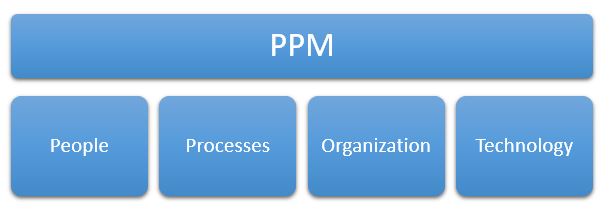So you want to buy a PPM (Project Portfolio Management) tool?
But are you ready?
PPM and EPM tools can provide significant benefits, but without checking that the prerequisites for successful realization of these benefits are in place, your implementation might not produce desired outcomes.
In modern world of amazing technology, most people think that “if there is a tool, it can solve our problem”. Sometimes a similar mindset prevails when a company decides to implement PPM system to manage their portfolio of projects.
There’s no doubt that plugging in a smart tool is easier than addressing vast process and culture issues.
So for some, the first step toward PPM is to buy and install “the best PPM tool available.” Then they realize that they don’t have processes in place. They meet resistance to changing processes to suit the tool’s needs. Most of the time they fail and put all the blame on PPM tool.
Sound PPM projects begin with a clear-eyed assessment of the organization’s PPM maturity level and its appetite and ability to advance. If it’s at level 1 now, realistically how feasible is level 4 or 5, and how rapidly can the company achieve it? It may be time to begin embracing PPM best practices, but reaching the desired level can take many months. PPM maturity is a journey, not an event.
The choice of tool is secondary to these considerations. The best tool is the one that most fully serves the very particular needs of the company, regardless of the judgment of the technology marketplace.
Below are listed some dynamics that will need to be considered when approaching an Project Portfolio Management(PPM) implementation.
- Implement PM processes and practices in your organization. If you don’t have a documented methodology and practice, introducing a tool cannot make any difference.
- Secure executive sponsorship and resources. If you have been trying to sell these to stakeholder groups on the benefits of introducing a tool, you need to make sure they have sufficiently bought in.
- Allocate human and financial resources to support the tool past the initial roll out. Regardless of whether a PPM solution is installed on-site or on cloud (subscribed to over the Internet), you still need to have internal or external staffing to provide application support to your end users, to identify and address coaching or compliance issues, and to receive feedback from end users and incorporate that feedback into ongoing improvements to your procedures & the configuration of the tool. Beyond this, depending on your organization’s needs and the capabilities of your selected tool you may require software development for creating interfaces with your existing business systems and report authors to create custom reports from the tool’s centralized repository.
- Sell the PPM solution to the primary end users as well. As they are expected to enter and maintain project data in order to populate dashboards and reports. Try not to increase the administrative work load for team members. if there are existing procedures and processes that are already effective, you can leverage existing habits, practices, and procedures in order to help users’ adoption.
- Train your users based on their roles. Check if you have sufficient personnel with sufficient experience to accomplish the goals that have been set. Remember that different people will have a different roles in the eventual project portfolio management process. Your users will use PPM more efficiently when they have an understanding of the lingo of project management. But it makes no sense to train every employee to be a project scheduler if, in fact, they’ll never be responsible to create schedules. By default, you can think of four roles: Administrator, Project Manager, Team Member, and Executive. Of course, depending on organizational structure the roles may be quite different.
Consider the road to full PPM a journey while taking small steps to get to your goal. Management can’t push the user base to achieve goals faster than their skills will allow them to progress.
With today’s difficult economy and global competition, companies can hardly survive the failure of a third of their projects. Embracing PPM can set them on a path to a successful, mature PPM discipline which will help them achieve business goals.
Şener KARA





